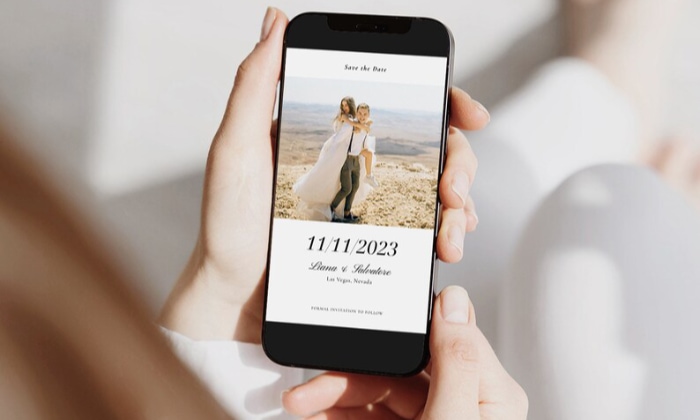E-Cards: Digital Greetings Explained

Gone are the days when people waited eagerly for the postman, hoping for a paper greeting card that symbolized affection, congratulations, or holiday wishes. Fast forward to the digital age, and we find E-cards claiming a significant portion of our inboxes and social media feeds.
Imagine receiving a personalized, animated greeting that not only conveys a message but also captivates your senses with sound, visual elements, and even interactive features.
What Is an E-Card?
E-cards stand as a testament to the seamless blend of tradition and technology. They have swiftly made their way into our digital lives, offering a convenient and often creative alternative to traditional paper cards.
Definition of an E-Card
An E-card, or electronic card, is a digital message designed to convey greetings, sentiments, or other communications through the medium of the internet. Unlike a paper greeting card that you buy in a store and mail physically, an E-card is sent and received virtually, usually via email, social media platforms, or dedicated E-card websites.
Physical Greeting Cards vs. E-Cards
The allure of a physical greeting card lies in its tactile quality—a texture to feel, a handwritten note to read. E-cards, on the other hand, offer a different kind of allure.
While they may lack the physical touch, E-cards compensate with interactive elements like animations, music, and even video clips. You can personalize an E-card right from your computer or mobile device, sending it to the recipient instantly, without concerns about postal delays or shipping fees.
Types of E-Cards
E-cards are as diverse as the occasions they celebrate. From the straightforward to the elaborate, the variety is vast.
Static E-Cards
Static E-Cards are the simplest form of E-cards. They consist of a fixed image—often a digital photograph—with text that delivers a specific message.
These E-cards resemble traditional printed cards in their immobility but are sent via digital channels. Static E-Cards can be as simple as a JPEG or PNG image sent via email or shared on social media.
They serve as a convenient option for those who prefer simplicity and ease of use.
Animated E-Cards
If you’re looking to add a bit of flair to your greetings, animated E-Cards may be the right choice. Utilizing lightweight animations, usually in the form of GIFs or simple JavaScript, these cards bring static images to life.
The animations can range from moving text to a short story depicted through sequential images. This added visual engagement often makes animated E-Cards a popular choice.
Video E-Cards
Video E-Cards take the concept of animation a step further by incorporating actual video clips into the greeting. The video could be a pre-designed animation, clips of memorable moments, or even a personalized message recorded by the sender.
With the added elements of movement and sound, Video E-Cards create an immersive experience for the recipient.
Interactive E-Cards
Taking engagement to the next level, interactive E-Cards incorporate elements that require action from the recipient. These can include games, quizzes, or clickable buttons that lead to other web pages or reveal hidden messages.
The interactive features offer an additional layer of engagement and personalization, making the greeting more memorable.
How E-Cards Work
The mechanics of E-cards might seem complex, given their array of features and formats. However, the process is designed to be user-friendly, ensuring that people of all technological proficiencies can send and receive these digital greetings.
The Sending Process
Sending an E-card typically begins with a visit to a dedicated website that offers a range of E-cards for different occasions. Once there, you select the card that fits your purpose.
After making your selection, customization is the next step. Most platforms allow you to input personalized text, and some even allow you to upload photos or add voice messages.
After customizing the E-card to your satisfaction, the next step involves choosing the delivery method. The most common methods include sending the card via email, direct link, or social media.
Most websites generate a unique URL for the E-card, which can be shared with the recipient by any digital means. Some platforms provide the option to schedule the E-card for a later date, ensuring you never miss an occasion.
The Receiving Process
Receiving an E-card is usually as simple as clicking on a link. Once the recipient opens the link provided by the sender, they are directed to a webpage where the E-card is displayed.
If the E-card contains interactive elements, the recipient can engage with these as instructed.
Safety Measures
Given that E-cards are transmitted over the internet, it’s important to consider security. Many reputable E-card websites use SSL encryption to secure the data. Additionally, because E-cards can be susceptible to phishing scams, it’s crucial to verify the source before opening any links.
Most trusted platforms have a verification mechanism to ensure the E-card was sent from their website.
Time Factors
One of the most significant advantages of E-cards over traditional cards is the instantaneity of delivery. There are no shipping times or postal delays to account for.
As soon as the sender clicks the ‘send’ button, the E-card is usually delivered almost instantly. This immediacy is one of the most appealing aspects of E-cards, especially for last-minute greetings or international communications where time zones can be a factor.
Benefits of Using E-Cards

While traditional greeting cards have their own charm, the benefits of E-cards are making them increasingly popular. These digital iterations bring a range of advantages to the table that go beyond mere convenience.
Cost Efficiency
One of the most straightforward advantages is the cost. E-cards can be incredibly cost-efficient, often available for free or at a nominal charge.
This makes them a favorable option for those on a budget, as it eliminates the costs associated with purchasing a physical card and postage.
Eco-Friendly Alternative
In an age where sustainability is more critical than ever, E-cards offer an eco-friendly alternative to paper-based greeting cards. By going digital, you’re saving paper and reducing the carbon footprint associated with the manufacturing and shipping of physical cards.
Customization and Personalization
E-cards offer a high level of customization. Most platforms offer a variety of tools that allow you to tailor your message precisely to your liking.
Whether it’s inserting a personal photograph, adding a voice message, or even choosing a specific animation, the possibilities for personalization are extensive.
Instantaneous Delivery
Speed is another benefit that cannot be ignored. With E-cards, you don’t have to plan weeks in advance to account for shipping times.
Whether you need to send a last-minute birthday greeting or a spur-of-the-moment thank-you note, E-cards can be sent and received in a matter of minutes.
Accessibility and Reach
The internet has bridged distances like never before, and E-cards take full advantage of this connectivity. Regardless of geographical location, you can send an E-card to anyone with an email address and internet access.
This makes it particularly useful for international greetings where postal services might be slow or expensive.
Variety and Creativity
The digital nature of E-cards allows for an enormous range of creative possibilities. From intricate animations to interactive quizzes, the scope for creativity is boundless.
This variety ensures that you can find or create an E-card that is uniquely suited to the recipient’s tastes and the occasion at hand.
Common Use Cases for E-Cards
E-cards have become a go-to choice for various occasions, both personal and professional. While the use of E-cards was initially mostly limited to holiday greetings and birthdays, the scope has expanded dramatically over the years.
Here, we explore the diverse range of scenarios where E-cards prove to be particularly fitting.
Personal Occasions
- Birthdays: Perhaps the most common use case, E-cards for birthdays can range from funny and quirky to sentimental and heartfelt.
- Anniversaries: Celebrating milestones in relationships can be enhanced by E-cards that capture the essence of time spent together.
- Congratulations: Whether someone has achieved a professional landmark or personal accomplishment, a congratulatory E-card can add to the celebration.
Holidays and Seasonal Events
- Christmas and New Year: The holiday season sees a surge in E-card use, especially those featuring winter themes and well wishes for the coming year.
- Valentine’s Day: E-cards offer a convenient and immediate way to send love-filled messages.
- Easter and Other Religious Holidays: Specific E-cards designed for religious holidays offer a way to share spiritual messages.
Professional Settings
- Thank-You Notes: Post-interview or after a business meeting, a professionally designed E-card can leave a lasting impression.
- Company Announcements: Whether launching a new product or celebrating a company milestone, E-cards serve as a practical medium for sharing the news.
- Employee Recognition: E-cards can be an effective way to acknowledge and reward outstanding performance in a workplace setting.
Special Interest and Activism
- Awareness Campaigns: E-cards are often used in campaigns to raise awareness about social issues, health matters, or charitable causes.
- Invitations: While not a replacement for formal paper invitations, E-cards can serve as a convenient and eco-friendly alternative for casual events.
Friendship and Everyday Messages
- Just Because: Sometimes there’s no specific reason; an E-card can simply serve as a spontaneous gesture of friendship or goodwill.
- Get Well Soon: Sending wishes for health and recovery is another popular use of E-cards.
Potential Pitfalls and Considerations

While E-cards come with an array of advantages, it’s important to be aware of certain pitfalls and considerations that could impact your experience. From security concerns to issues of etiquette, here are some factors that warrant careful thought before sending or receiving E-cards.
Security Concerns
One of the primary concerns with E-cards is the potential for malicious activity. Phishing scams can sometimes disguise themselves as E-cards, tricking the recipient into clicking harmful links.
To mitigate this risk, it’s advisable to use well-known and reputable E-card services. Always confirm the sender’s identity before clicking on any links, and look for SSL encryption to ensure the platform is secure.
Personal Touch
While E-cards offer considerable room for customization, some argue that they lack the personal touch of a handwritten note. If the occasion is a highly personal or sentimental one, consider whether an E-card will convey the depth of your feelings adequately.
Technical Barriers
Not everyone is comfortable with digital formats. Particularly among older generations who may not be as tech-savvy, receiving an E-card could present a challenge.
Make sure your recipient is comfortable with digital communications before opting for an E-card.
Etiquette and Appropriateness
Certain occasions may call for a more traditional approach. For example, while an E-card may be acceptable for a casual birthday greeting among friends, it might not be the best choice for formal events like weddings or milestone anniversaries.
In a business context, consider the corporate culture and the nature of your relationship with the recipient before sending an E-card.
Clutter and Overlooked Messages
Given the sheer volume of digital communications that people receive these days, there’s a chance that your E-card could be overlooked or lost in a cluttered inbox. Timing your message wisely and providing a heads-up to the recipient can help ensure your E-card gets the attention it deserves.
Legal and Copyright Issues
While creating a custom E-card, be cautious of using copyrighted materials without permission. Utilizing someone else’s artwork, photography, or music could potentially lead to legal issues.
Conclusion
E-cards have carved a significant niche in digital communication, offering a convenient and creative alternative to traditional paper cards. Their benefits span from cost efficiency and eco-friendliness to vast customization options and instantaneous delivery.
The applicability of E-cards is broad, accommodating a range of personal and professional scenarios. However, their use is not without considerations; factors like security, personal touch, and appropriateness are important to keep in mind.
By acknowledging these dimensions, one can make the most out of what E-cards have to offer, using them effectively across various contexts and occasions.


